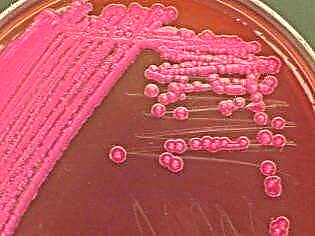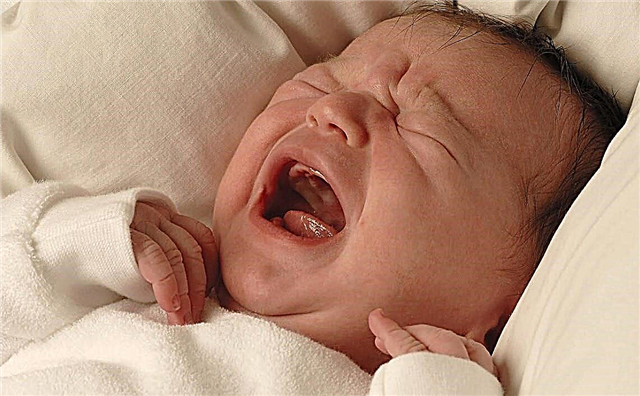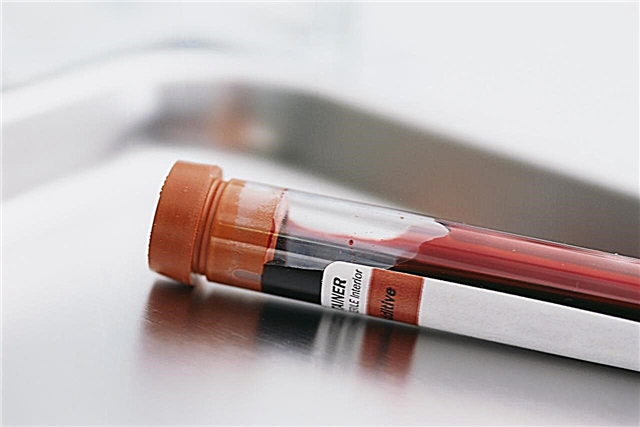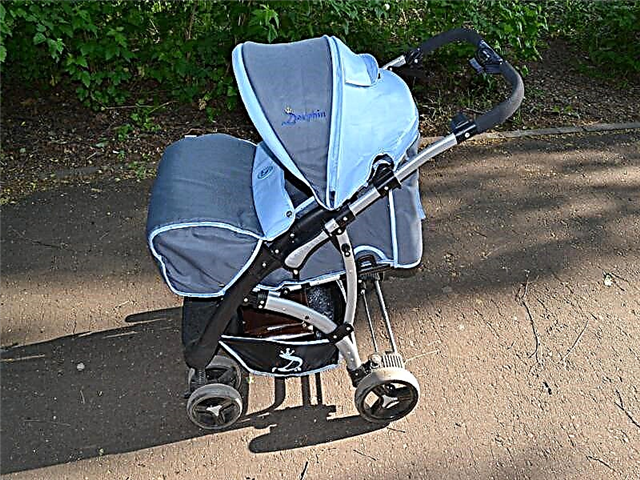
Klebsiella infection in a child is a condition that requires an adequate response from parents and doctors. What to do if the baby has Klebsiella and how to treat the infection, you will learn from this article.
What it is
Klebsiella is a bacterium that is not considered a disease-causing agent in itself. This is a conditionally pathogenic organism that can cause disease only under certain conditions. The bacterium is named in honor of its "father" - the discoverer of the German pathologist Edwin Klebs. This bacterium belongs to the family of enterobacteria and, on this basis, has a kind of relationship with E. coli and plague bacillus, with Salmonella. In 2017, Klebsiella was ranked among the rather dangerous bacteria, but only because it shows amazing resistance to antibiotics existing today. The bacterium shows rapid resistance to new antimicrobial drugs.
Klebsiella is a gram-negative bacillus with a capsule that protects it well from environmental influences. Most often, the microbe is found in the feces of people, on the skin and mucous membranes of the respiratory system, and can also be transmitted with soil, water and food - mainly with fruits and vegetables if they are not washed well.
Klebsiella belongs to anaerobic microorganisms, its reproduction usually occurs in an anoxic environment. When boiled, the bacterium dies, but under the conditions of the air we are accustomed to, it does not lose its activity and potential danger.


The bacillus can be unnoticed in the body of any person as long as his immunity is able to restrain its activity. However, as soon as the immune defense is weakened, the bacteria begins to multiply actively. In infants and newborns, immunity is not strong enough by itself. Of course, the innate maternal immunity protects the baby to some extent, but only up to six months and not from all diseases. Therefore, the risk of contracting Klebsiella in babies in the first year of life is very high.
The bacterium mainly affects the intestines of the child. But the toxins that it releases during its reproduction and vital activity can have a negative effect on any organs and systems of the baby, because they are very vulnerable in newborns. So far, science knows eight varieties of this microorganism. They have rather long and complex Latin names. The difference between species lies in the set of antigens. Most often, in childhood, two types are found - Klebsiella pneumoniae causes pneumonia, and Klebsiella oxytoca - unpleasant gastrointestinal manifestations with diarrhea and abdominal pain.

These and other types of bacteria can cause diseases such as conjunctivitis, meningitis, sepsis and even cause rhinoscleroma, in which the mucous membrane of the respiratory tract is severely affected. According to its "behavior" Klebsiella is very close to Staphylococcus aureus, which can also exist for a very long time in the body of an infected person imperceptibly and quite peacefully. However, under the influence of unfavorable (for humans) and very favorable (for bacteria) factors, growth and reproduction begins.
The disease "klebsiellosis" as such is absent in the international classification of diseases, but the ICD-10 provides for certain positions for diseases caused by bacteria, for example, for bacterial pneumonia.


Causes
The pathological reasons that contribute to the activity of Klebsiella are quite diverse, but they all mostly boil down to a decrease in immunity. Therefore, children who were born weakened and sickly, premature babies, babies who have inherited HIV infection are at risk of contracting Klebsiella.
In infants and newborns, the transfer from breastfeeding to artificial milk formulas can also provoke an immune decline, since most of the antibodies the body of the crumbs is obtained with the mother's milk. The second, no less common, reason for the development of Klebsiella in the body is a violation of the sanitary regime and hygiene rules. The bacteria can enter the child's body with water, if it is not boiled, with poorly washed vegetables and fruits, and even from the hands of adults who care for the baby.
If, on top of that, immunity is weak, then a disease-causing process begins in the intestines or on the mucous membranes of the child's respiratory system.

Klebsiella lives not only in the human body, but also in domestic animals. Sometimes infection becomes possible from the contact of an infant with a pet. Infection can also occur in a hospital, sometimes right in the hospital.
These hospital bacteria are highly resistant to antibiotics and the diseases they cause are difficult to treat.
Often, a child is diagnosed with the joint presence in the body of both staphylococcus and Klebsiella. These two microbes can act in tandem, staphylococcus aureus disrupts the microflora in the intestine, which creates more favorable conditions for the existence and reproduction of Klebsiella.

Symptoms and Signs
If Klebsiella is found in the analysis of the baby's feces, then this fact cannot be considered a reason for starting treatment. Rather, it is proof that the baby has these bacteria, but the immunity copes with them, which in itself cannot be considered a disease. The development of Klebsiellosis can only be talked about when the child has symptoms.

The signs are not specific, characteristic only for this pathology, and therefore it can be quite difficult to recognize them:
- Stool disorders. The stool becomes liquid, contains fragments of undigested food, it can be foamy, sometimes with blood impurities. The color of feces becomes yellowish-green, has a pronounced putrid odor.
- Abdominal pain. The child has a swollen belly, he becomes restless due to pain in the tummy, and increased gas production may be observed.
- Regurgitation. It is clear that any regurgitation should not be considered a sign of a bacterial infection. Abundant regurgitation, a "fountain" exceeding the volume of a tablespoon, should definitely alert parents, since it may indicate the presence of Klebsiella.
- Digestive upset. A child with Klebsiellosis may vomit. He refuses food, appetite suffers.
- Fever. In the acute stage of infection, the temperature can rise to 38.5-39.0 degrees.
When the respiratory organs are affected by Klebsiella, the symptoms are also acute. The temperature rises (up to 39.0 degrees), a strong cough appears, sputum streaked with blood and an unpleasant odor can be released, the child becomes lethargic and drowsy, is capricious and refuses food. All these symptoms can be signs of a host of other diseases, the more important it is to consult a doctor in a timely manner. In fact, parents quite often mistake the manifestations of bacterial infection for dysbiosis, and without the doctor's knowledge, they start giving prebiotics and probiotics to the child. Without proper treatment, the infection develops further, and the child's condition worsens significantly.
Given that the microbe is very resistant to antibiotics, treatment must necessarily be under the supervision of a doctor who can prescribe the correct antimicrobial therapeutic course.

Diagnostics
It is not possible to see the bacteria at home and to distinguish the disease that it caused from other ailments. It is possible to establish the fact of klebsiellosis only on the basis of laboratory studies. Most often, the microbe is found in feces... However, doctors are not limited to this and conduct a study of the baby's urine, blood and sputum for Klebsiella.
In the urine, the microbe is found infrequently, only if the crumbs develop pyelonephritis caused by Klebsiella. In all other cases, the ingress of a microbe into the urine analysis is considered an accident. As already mentioned, the bacterium can also be present in the analyzes of a perfectly healthy baby. But in this case, its content will not exceed 10 to the 5th degree (105 microbes per 1 gram of feces). If a baby is found to have 10 to 8 degrees per 1 gram of Klebsiella in feces, this is the basis for starting treatment for an intestinal infection caused by a bacterium.
10 to 6 degrees per gram found in sputum is the basis for suspicion of bacterial pneumonia and the appointment of appropriate treatment. 10 to 7 degrees is also a pathological concentration that will require treatment.
Additionally, similar bacterial cultures for staphylococcus can be carried out, because it often accompanies Klebsiella. It is uncommon, but it happens that the mother is asked to donate breast milk for the presence of bacteria.


Treatment
Do not think that a bacterial infection necessarily requires the use of antibiotics. This is logical, but not necessary. Mild Klebsiella infection can be treated without antimicrobial agents. The child is prescribed probiotics, which will help restore the balance of intestinal microflora, bacteriophages. It is bacteriophages, specially created viruses with the ability to destroy bacteria, that are considered the main method of therapy. Treatment with a bacteriophage can be quite long - up to 3 weeks.
Additionally, depending on the symptoms, antipyretics are prescribed Paracetamol, Nurofen, and also means for oral rehydration, if the baby has prolonged diarrhea or frequent vomiting ("Smecta", "Regidron"). For more effective bowel cleansing, the so-called intestinal antiseptics can be used - "Furazolidone" and similar drugs.
Not all babies tolerate these medications well; in many, it causes nausea and headaches. Therefore, when such symptoms appear during treatment, it is imperative to tell the pediatrician so that he can choose another way to help the baby.
Mild infections are allowed to be treated at home, but with the knowledge and consent of the pediatrician. Since babies are unpredictable people and a deterioration in their condition can happen at any time. If the infection has a pronounced course, the doctor can advise hospitalization and will be absolutely right. You should not refuse the course of treatment in the hospital, at least for safety reasons for the baby. To select an antibiotic that will target a specific bacterium found in a child in a hospital setting conducting research on the susceptibility of bacteria to the influence of antibacterial drugs.
For this, in laboratory conditions, Klebsiella is "attacked" by various antimicrobial agents, and the drug that will cause maximum damage to it will be chosen as the main one for treating a particular child. Antibiotics are given together with immunomodulators to increase the baby's immunity to resist.
This whole process takes from 7 days to 21 days, it must necessarily proceed under constant medical supervision, since there is a risk of infection of other organs.
The attending physician will monitor the resistance of the pathogenic microbe and, if necessary, replace one antibiotic with another.


For the treatment of children under the age of 1 year, antibiotics are usually used, which belong to the family penicillins or cephalosporins. Their effect on the body as a whole is quite gentle, which was appreciated by pediatricians. Treatment of pneumonia caused by Klebsiella most often takes place in a hospital setting according to a scheme that is very similar to the treatment of intestinal ailments caused by this microbe. Simultaneously with the treatment, the doctor will definitely recommend that the nursing mother change her diet, eliminate complex carbohydrates from it.
A child who eats mixtures must additionally receive vitamins; in some situations, the pediatrician advises to change one type of mixture to another.


Recently, in the treatment of Klebsiella, most modern doctors are trying to avoid the use of antibiotics, because they believe that the harm from this bacterium is somewhat exaggerated, and the child's immunity, with proper nutrition and creating favorable external conditions, will be able to cope with the infection on its own. Naturally, this only applies to those types of bacteria that cause intestinal symptoms. In the treatment of Klebsiella pneumonia, the approach remains the same.

Potential hazards and consequences
How to treat and cure the Klebsiella bacterium in general should be decided exclusively by the doctor. The prognosis and duration of treatment largely depend on how quickly the parents noticed something “wrong” and turned to a specialist. That is why it is important not to deal with the treatment of diarrhea and vomiting in an infant with folk remedies, and if such signs appear, immediately call the clinic and call a doctor.
With profuse vomiting, severe diarrhea against a background of high temperature, the risk of dehydration in infants increases, and this process will be rapid. Therefore, it is important to immediately call an ambulance.
There is no need to be afraid of an infectious hospital, where, according to the sincere conviction of many parents, “the child will pick up a couple of dozen more viruses and bacteria”.
Theoretically, Klebsiella in a neglected and aggressive form can cause not only diarrhea, but also adversely affect the condition of the joints, cause sinusitis and meningitis, as well as a very dangerous complication - bacterial systemic sepsis. And although the likelihood of such consequences for the average baby is not so great, it is not worth risking the child's life.

Prevention
It is quite difficult to protect yourself from Klebsiella, since it surrounds us everywhere, and even our own parents can pass this microorganism on to their child. That is why the greatest emphasis in prevention should be placed not on the sterile cleanliness of everything that surrounds the baby, but on strengthening its immunity. For this, the child should spend enough time in the fresh air, his diet should have enough vitamins and minerals necessary for the normal functioning of everything. organism.


You should not stuff your child with pills and syrups at the first signs of any disease, because viruses and bacteria "train" the immune system, which forms antibodies to various pathogens. In an attempt to strengthen the baby's immunity, some parents come to medications - immunostimulants and immunomodulators. You should not use such means for preventive purposes, as they can lead to the fact that the child's own immunity will begin to "lazy".
The exception is cases of clinically confirmed immunodeficiency, when such drugs are, in fact, a method of therapy.
The concomitant prevention of klebsiellosis is the observance of the rules and norms of hygiene. Adults may not even know that they are carriers of the bacteria, and therefore it is important every time after the toilet to wash their hands with soap and water before approaching the child. The baby himself also needs to wash his pens if he interacted with pets or returned from a walk on the street. Only one type of Klebsiella is transmitted by airborne droplets, which causes pneumonia.It is quite difficult to protect yourself from it, but it is encouraging that such bacterial pneumonia occurs infrequently in children and adults.
Parents of an infected child can also reduce the incidence. After detecting the pathological content of bacteria in the analyzes, they should limit the communication of the baby with peers, other children in the family, stop sharing toys, bedding and dishes until the baby is completely cured.


You will learn more about the prevention and treatment of microbial and bacterial diseases in the following video.



